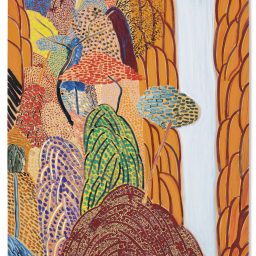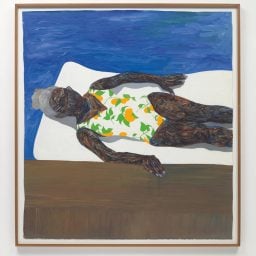Months ago, having a high-powered contemporary art auction in New York City seemed like a pipe dream. But July is here, and the major auction houses appear to have figured out how to sell art in a newly distanced social landscape through a combination of in-person specialists and bidders raising paddles via cyberspace.
Days after the surprisingly lucrative Sotheby’s auction Monday, Phillips held an hybrid online and in-person affair in which each of the lots found a buyer—known as a “white glove” sale—en route to a haul of $34.7 million at the hammer, or $41.1 million with premium. The hammer total was smack dab in the middle of the $29.4 million low estimate and the $41.6 million high estimate.
“Tonight’s sale was a resounding statement about the strength of our market, the contemporary market in particular, as there’s a certain amount of huge pent-up demand if you think about the amount of money that would have been spent in the global art market,” Phillips CEO Ed Dolman said in a live zoom press conference following the sale. “It’s quite obvious to us there’s a significant amount of money on the sidelines waiting to get a chance to get back in the art market.”
To underscore that we are in transition period, the stream began with Dolman, his head hovering beneath colleagues Robert Manley and Jean-Paul Engelen, saying “Are we live?” at a time when he and his colleagues were, indeed, very much live.
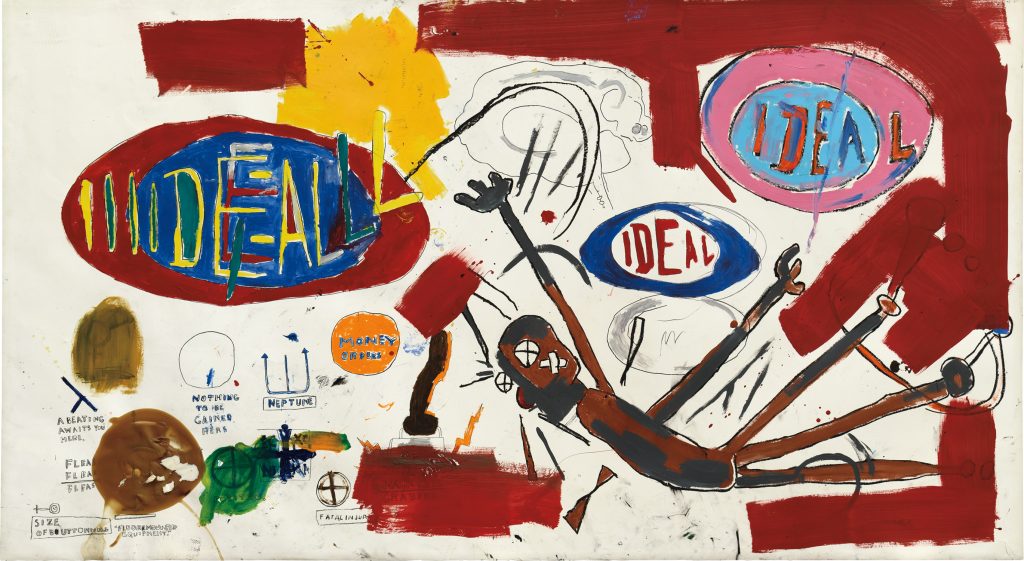
Jean-Michel Basquiat, Victor 25448 (1987). Photo courtesy Phillips.
“These are Very Unusual Circumstances”
Of course, the total paled in comparison to the equivalent real-life sales once held in New York. In November 2019, Phillips brought in $108 million at its 20th Century and Contemporary Art Evening Sale. And the new setup, wherein auctioneer Henry Highley stood in London toggling between screens showing sales rooms in New York and Hong Kong, was jarring for viewers, and presumably bidders. It seemed to rattle the auctioneer, too—several times, lots had to be reopened post-hammer due to a bid that got lost in the ether of the information superhighway, traveling not from the back of the saleroom, but from another part of the world.
And at 25 lots, the sale was significantly smaller than the auctions at the house’s rivals this week and next.
“These are very unusual circumstances and we’ve had to adapt,” Dolman said. “The sales are a bit smaller, but that’s due to an element of trepidation.”
Nothing came close to the towering Sotheby’s highlight from Monday night: Francis Bacon’s Triptych Inspired by the Oresteia of Aeschylus (1981), which sold for an above-high-estimate $84.6 million with fees. But that’s par for the course; it seems nothing can change the rules of a longstanding auction-world duopoly.
But judging by the expressions of relief that permeated through the grainy live feed, Phillips was more than happy to unload its top seven-to-eight-figure lots, for prices within their estimates. The top offering was Joan Mitchell’s Noel (1961–62), which sold to Phillips senior specialist Kevie Yang on a $9.5 million hammer (or $11.2 million with fees).
Jean-Michel Basquiat’s Victor 25448 (1987) went to the guarantor’s single bid of $8 million, on the phone with Robert Manley (with fees, the price was $9.25 million). Gerhard Richter’s Abstraktes Bild (801-3) (1994) was seized by Manley with a $3.05 million hammer, just above the $3 million high estimate, and with fees the price came to $3.7 million.
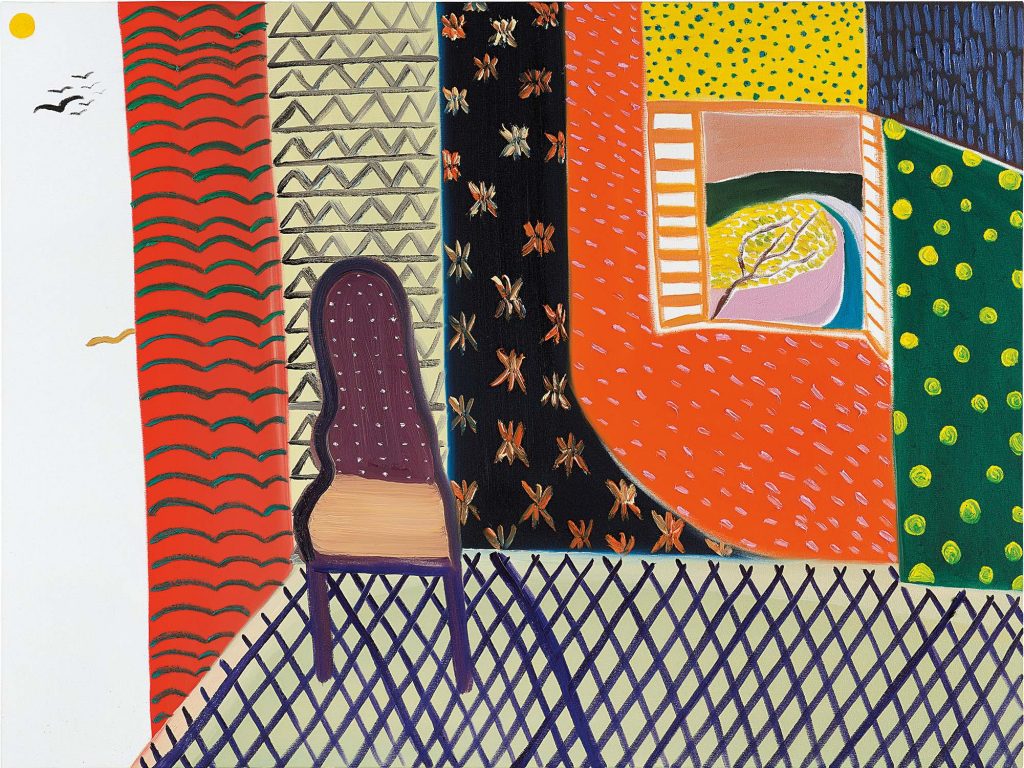
Matthew Wong, Mood Room (2018). Photo courtesy Phillips.
Fresh Markets, New and Emerging
Even in a taut sale with the fat cut away, those staring at their laptops had to endure some dull moments. The Basquiat was a one-bid wonder. The phones and the “room” had no interest in a George Condo apart from the prearranged guarantor bid. An Albert Oehlen hammered at $450,000, though its low estimate was $600,000, due to some funky reserve hijinks. Highley opened bidding on a Banksy but was met with crickets, and when Miety Heiden parachuted in with the only offering, a $1.8 million bid, the relief could be felt through the screen.
Less dull were moments when thickets of bids rushed through computer speakers, and new records were achieved for Titus Kaphar, Christina Quarles, and Ali Banisadr.
The most exciting theatrics of the auction came when Phillips did what it often does best: offer a work by a budding new auction darling, and validate the high prices. For instance, a painting by the late, great Matthew Wong was slotted second in the auction, just days after another Wong painting sold for $1.8 million with fees at Sotheby’s—more than 22 times the high estimate, the winner vanquishing an astonishing 58 other bidders for the prize.
Though the Phillips painting was about half the size, Highley was able to coax bids from a half-dozen specialists from various offices, before it hammered at $690,000 to Hugues Joffre—with fees, $848,000, another remarkable price for the artist who, it’s painful to remember, will no longer bring new work into the world, having died by suicide in October 2019.
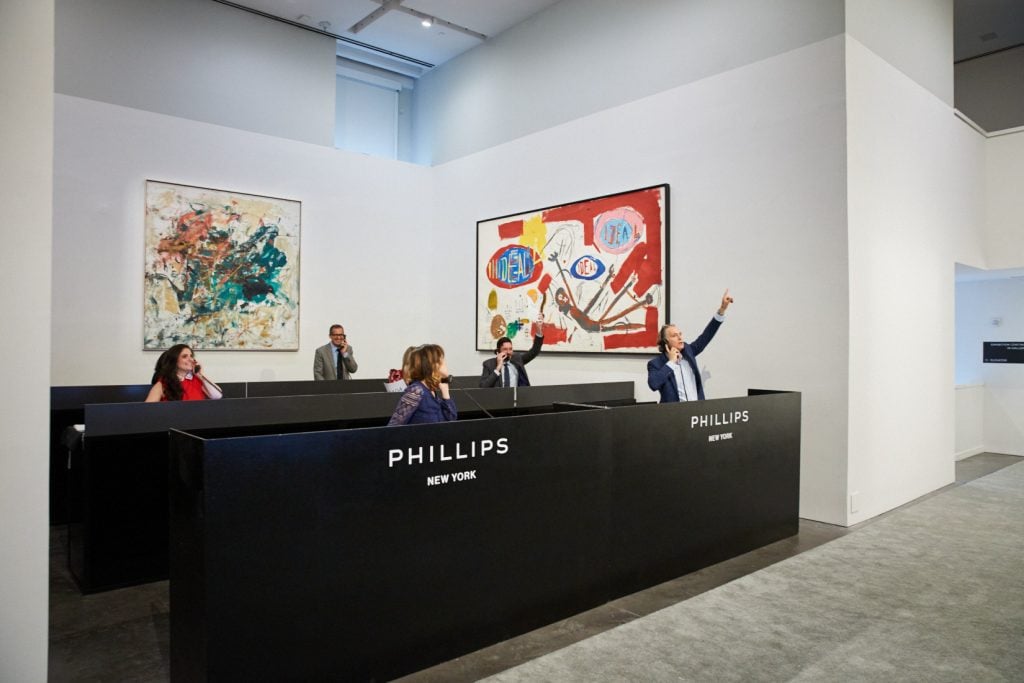
Specialists used to stand next to each other on the rostrum (and also other people used to be there). Photo courtesy Phillips.
Many speculators also had eyes on the sale’s painting by the Ghanaian painter Amoako Boafo, who vaulted into the spotlight just before the pandemic seized all travel. At Phillips in London on February 13, a painting expected to hit a high estimate of around $65,000 sold for around $880,000, more than 13 times its high estimate. But on Thursday, there were some warning signs about Boafo’s Joy in Purple (2019). Another painting by the artist offered in the Phillips afternoon sale sold for $225,000, down from where some sources said they expected it to peak. Plus, the evening-sale Boafo had already been flipped three times, sullying its provenance.
And yet the bidders came through, and Joy in Purple sold for a $540,000 hammer to Phillips specialist Scott Nussbaum, or $668,000 with fees. Nussbaum also won for a client a painting by fellow Ghanaian Otis Kwame Kye Quaicoe, which sold for a $200,00 hammer over a $30,00 high estimate, or $250,000 with fees.
“The things that were not in the sale were intentional,” Manley said, noting that they doubled down presenting to clients work by in-demand, emerging artists, Black artists and women artists. “We bet on the right horses.”
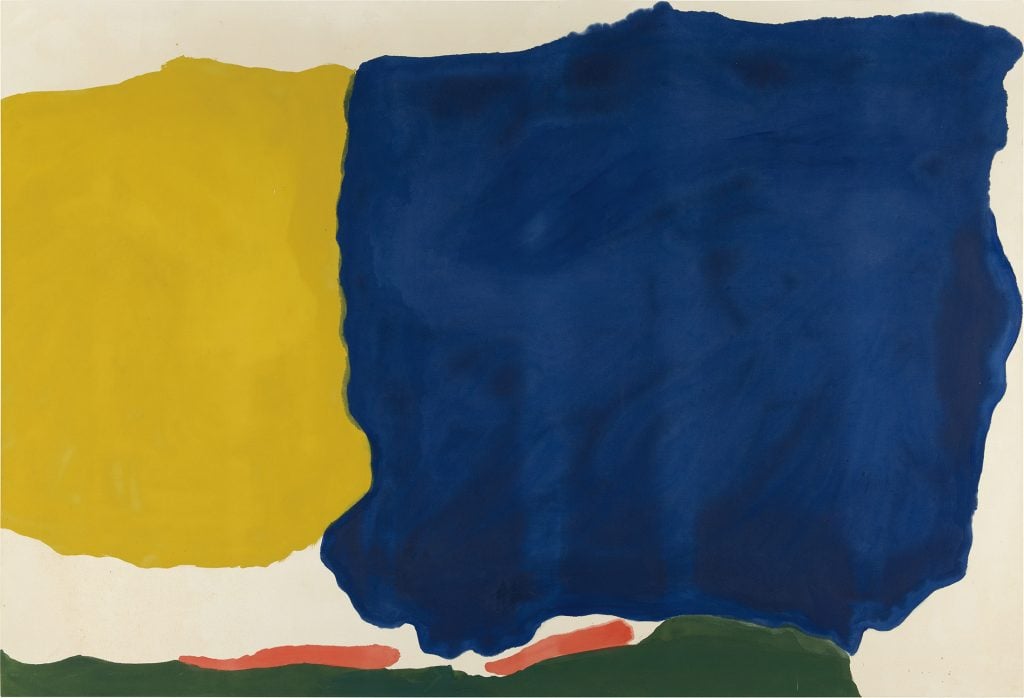
Helen Frankenthaler, Head of the Meadow (1967). Photo courtesy Phillips.
Embracing Online
In the post-sale press conference, Dolman, Manley, and Engelen admitted that the volume of spontaneous online bids—now the equivalent of an unplanned paddle waved in an audience, a long ago memory—was not what they would have hoped. Only two of the 25 lots went to non-Phillips bidders. But there were some instances where, with the right amount of calls beamed in and feisty-enough roughhousing on the rostrums, the dual-platform model, offline and online, could work.
Take the fourth-biggest lot of the night: Helen Frankenthaler’s Head of the Meadow (1967), consigned by the estate of American singer Andy Williams, and estimated to sell for between $600,000 and $800,000.
Highley burst out the gate with a very game in-book absentee bidder, but a competitor emerged in the form of an online joust, clicked through by someone the house identified as being from Atlanta. (There were, at various points in the night, bidders were from Switzerland, Venezuela, and Arizona.)
As Highley’s book-bidder kept pace, Atlanta hung in there until proceedings sailed past the million-dollar mark, and after a few jabs, Rebekah Bowling offered a $1.7 million bid. That could do it. But the paddle-waver in the book proved inexhaustible—”he’s an extremely loyal absentee bidder,” the auctioneer said—and bested Bowling, only to bow out right after, allowing Nussbaum to swoop in and grab the Frankenthaler at a $2.5 million hammer, or $3.02 million with fees.
Some of the sale’s albeit modest success, Manley said, had to do with the month of smaller online dry runs that went down during quarantine. Through that, the Phillips team reverse-engineered the business, and went about reconstructing an online sale to have the gravitas of an old-school, in-person auction.
Still, this was an experiment, and no one was quite sure how it would play out.
“It was staggering to see 20 phone bidders on a single lot,” Manley said. “We weren’t quite sure that the script would play out like it did.”
Dolman, too, was optimistic that the result is a harbinger of more sales that are small but potent, online but grounded in physical salerooms—and he thinks that it can give a shot of confidence to those worried that now is not the time to participate in the art market.
“The message from our consignors was that this is a good time to sell,” Dolman said.







